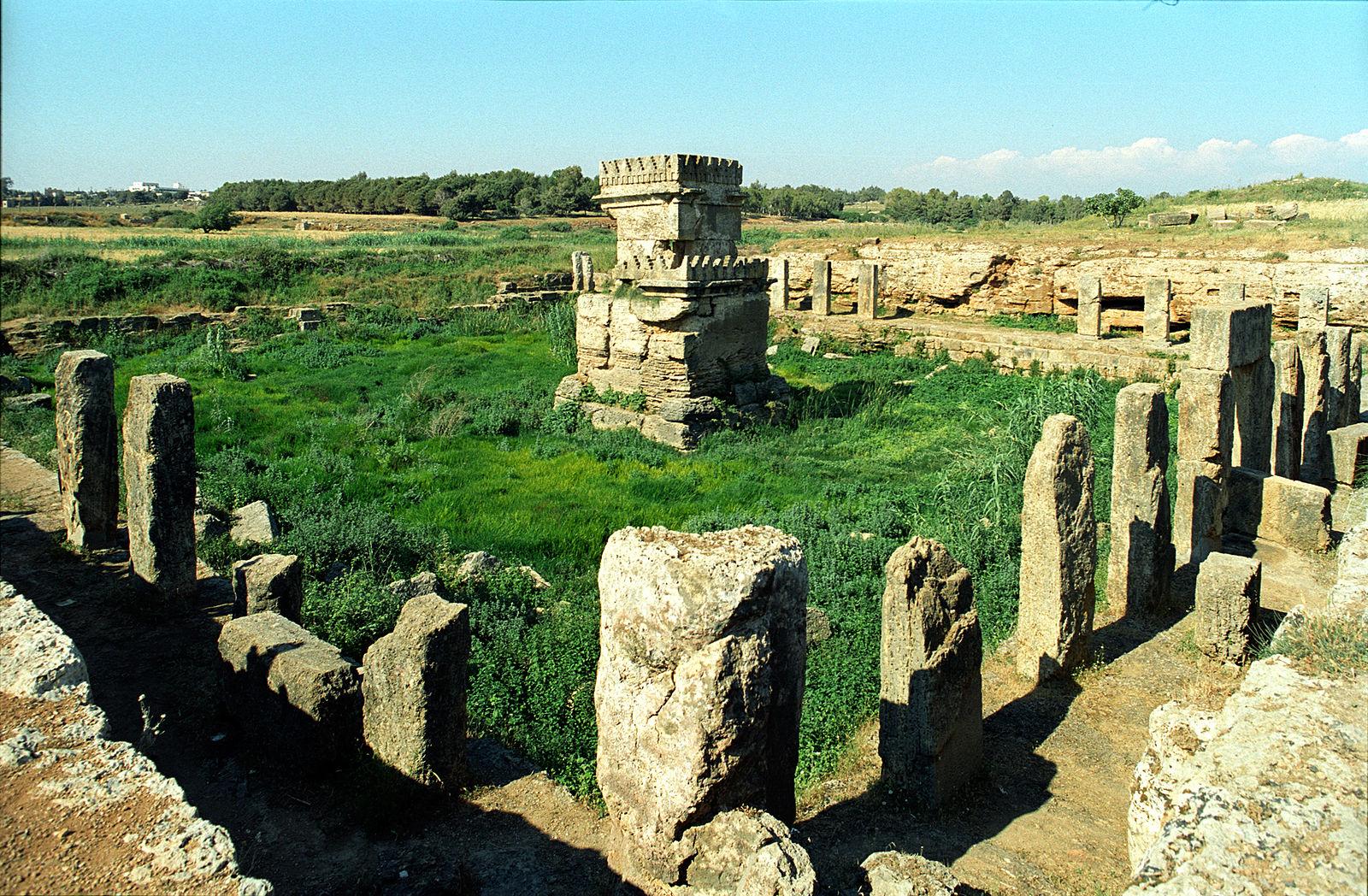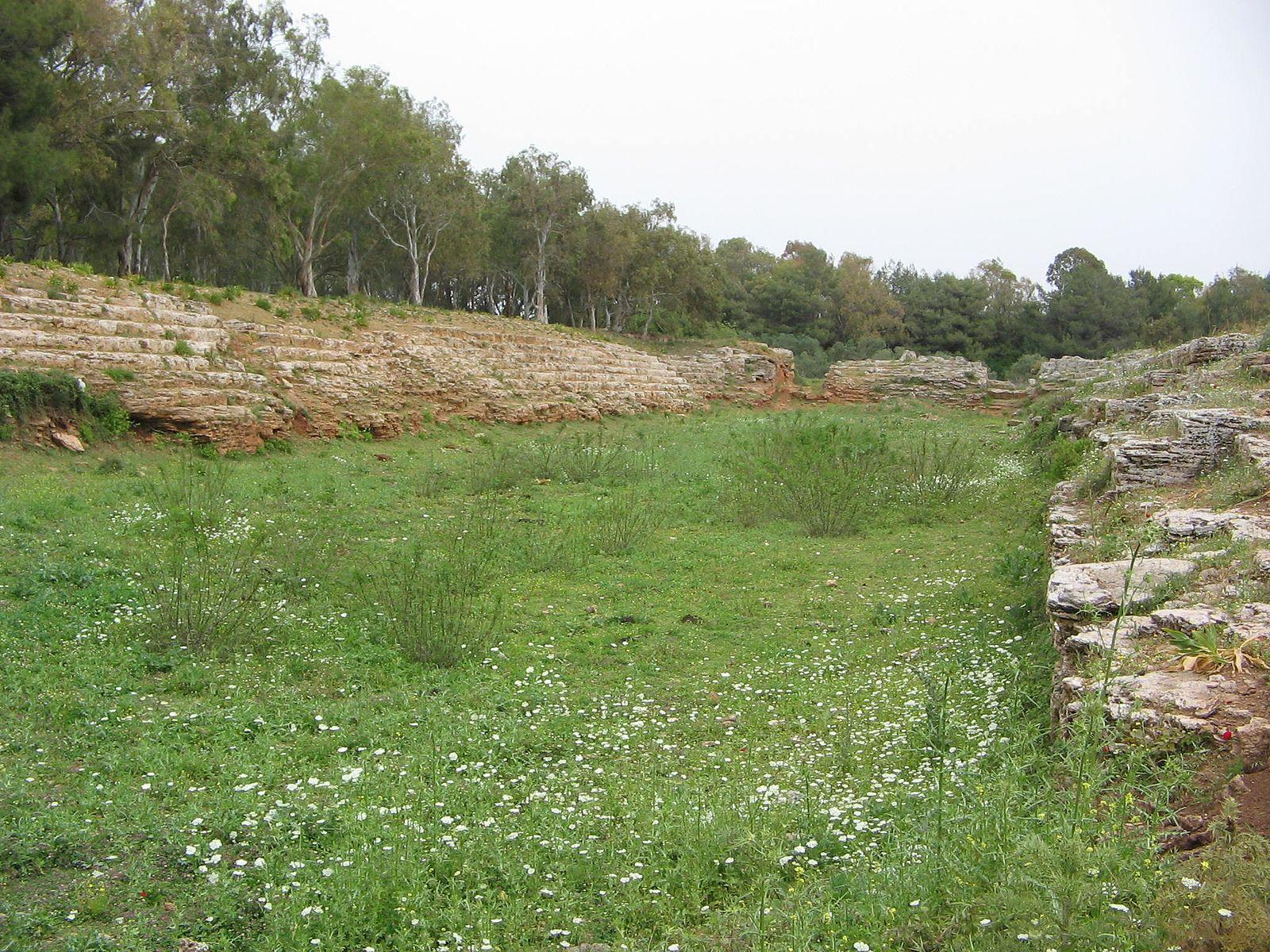4.5: Phoenicians (1200 BCE – 539 BCE)
- Page ID
- 31797
The Phoenicians were an ancient civilization living on the coast of the Mediterranean Sea in what is now Lebanon. Eventually, some of the settlements even extended along the coast of North Africa. They were known throughout the Mediterranean as the "Purple People" which referred to the color of the clothes they wore. The Phoenicians had a monopoly of the color purple made from a divertive of the Murex snail, selling highly prized purple fabrics along the trade routes. They also invented the "bireme," a multi-manned powered boat to easily traverse throughout the Mediterranean. Their settlements were politically independent city-states, similar to the Greeks, and their alphabet became the ancestor to most present-day European alphabets. The ancient Phoenician city of Amrit lies on the Mediterranean Sea in what is today, Syria. Two rivers run through the city, providing easy access to the sea for the seafaring Phoenician traders. There are two critical architectural remains at Amrit, the Phoenician temple and the stadium.
A large court carved from the bedrock measuring 47 by 49 meters and over 3 meters deep, was excavated in the 1950s, the remains for the Temple of Amrit (4.21). The center of the court held a sacred spring covered with a portico. Composed of stones and tapered towards the top, the burial towers, called spindles, jut upright out of the ground at 7.5 meters high.

The Phoenician stadium (4.22) was built in 1500 BCE and lay 200 meters northeast of the temple. The rock-carved stadium is 230 meters long and about 40 meters wide, similar to the dimensions of the Greek Olympic stadium. Carved from a natural U-shaped hillside, the stadium held up to 11,000 people at one time. Most of the stadium has degraded over time; however, seven rows of seating still exist and are preserved today. The stadium had two entrances, a tunnel running to the interior from the outside, probably the entrance for the athletes. Other nearby buildings may have been a gymnasium and an outdoor practice area. Experts believe that the stadium was for competitions and funeral games, and the events preceded the Greek Olympic games.



